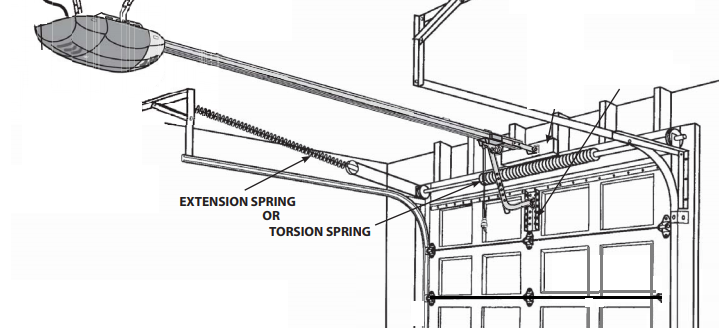Garage door springs play a crucial role in the smooth operation of your garage door, and understanding the right amount of tension is key to ensuring its longevity and functionality. In this comprehensive guide, we will explore the intricacies of garage door spring tension, providing you with the knowledge to maintain a well-balanced and efficient garage door.

The Importance of Proper Tension: A Balancing Act
Understanding how much tension your garage door spring should have is essential for various reasons. Insufficient tension can result in a door that doesn’t open or close properly, while excessive tension can lead to premature wear and tear on the entire system. Achieving the right balance is vital for the safety and optimal performance of your garage door.
How Much Tension on Garage Door Spring: The Basics
Factors Influencing Tension
Several factors determine how much tension your garage door spring requires. These include the weight of the garage door, the type of spring used (torsion or extension), and the door’s size. Consulting the manufacturer’s guidelines or seeking professional advice can provide specific information tailored to your door.
Identifying the Right Tension
Determining the correct tension involves a combination of calculations and practical adjustments. For torsion springs, the number of turns plays a crucial role. Extension springs, on the other hand, require proper adjustment of the pulley and safety cable.
How to Measure Tension: A Step-by-Step Guide
Step 1: Disconnect the Garage Door Opener
Before measuring tension, disconnect the garage door opener to prevent any accidents or unintended movements. This ensures a safe environment for adjustments.
Step 2: Check the Balance
Manually open the garage door halfway and release it. If the door stays in place, it is balanced. If it falls or rises, adjustments to the tension are necessary.
Step 3: Torsion Spring Adjustment
For torsion springs, use a winding bar to adjust the tension. Keep track of the number of turns, making gradual adjustments until the door is balanced.
Step 4: Extension Spring Adjustment
Adjusting tension for extension springs involves manipulating the safety cable and pulley. Follow the manufacturer’s guidelines for the specific adjustments required.
Common Issues and Troubleshooting: How Much Tension On Garage Door Spring Is Too Much or Too Little?
While adjusting tension, certain issues may arise, indicating either too much or too little tension. A door that closes too quickly may have too much tension, while a door that won’t stay open might have insufficient tension. Identifying and addressing these issues promptly is crucial for the door’s overall health.
Read too: How to Open Garage Door Without Power From Outside Like a Pro? Unlock the Secrets
Conclusion: Mastering the Art of Tension for Garage Door Springs
In conclusion, understanding how much tension on a garage door spring is a valuable skill for homeowners. Regular checks, proper adjustments, and attention to the details outlined in this guide can ensure the longevity and optimal performance of your garage door. Remember, if in doubt, seeking professional assistance is always a wise decision.



Leave a Reply